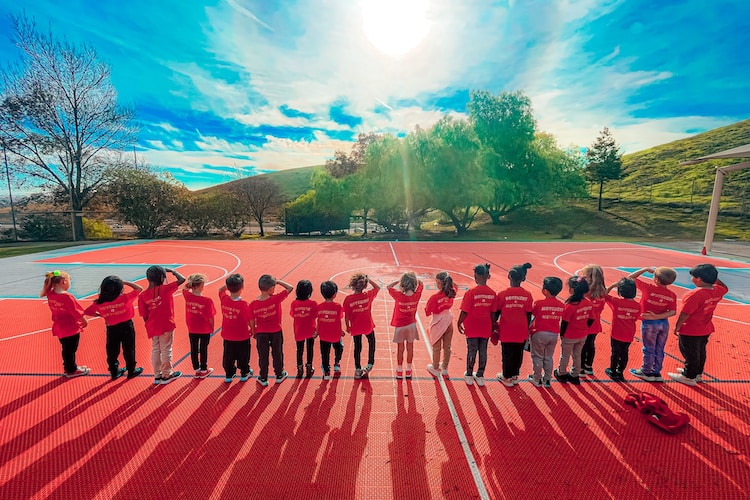
Physical education plays a crucial role in the overall development of students. It promotes physical fitness, teaches essential motor skills, and instills lifelong habits of health and wellness. In addition, physical education contributes to students’ social and emotional well-being by fostering teamwork, sportsmanship, and self-confidence. To ensure the effectiveness of physical education programs, educators employ various approaches that cater to students’ diverse needs and interests. In this article, we will explore 20 different approaches to physical education in schools.

1. Traditional Sports-Based Approach
The traditional sports-based approach focuses on teaching students the rules, skills, and strategies of different sports. It includes organized games, team competitions, and skill-building exercises. This approach provides opportunities for students to develop physical fitness, learn teamwork, and improve their sportsmanship.
2. Fitness and Conditioning
The fitness and conditioning approach emphasizes improving students’ overall physical fitness. It includes activities such as cardiovascular exercises, strength training, flexibility exercises, and agility drills. The goal is to enhance students’ endurance, strength, and flexibility while promoting a healthy lifestyle.
3. Adventure Education
Adventure education combines physical activities with problem-solving and team-building exercises. It involves outdoor pursuits such as rock climbing, hiking, orienteering, and ropes courses. This approach enhances students’ physical skills, self-confidence, and leadership abilities while fostering a connection with nature.
4. Dance and Movement
The dance and movement approach introduces students to various dance forms, rhythmic activities, and creative movement exercises. It promotes self-expression, coordination, and body awareness. Students learn different dance styles and engage in choreography, performances, and exploration of movement.
5. Individual Fitness Choices
In this approach, students have the autonomy to choose physical activities that align with their personal interests and goals. They can select from a range of options such as yoga, pilates, martial arts, or individual sports like tennis or swimming. This approach encourages lifelong physical activity by allowing students to pursue activities they enjoy.
6. Lifetime Sports and Recreation
The focus of this approach is on introducing students to sports and recreational activities that can be enjoyed throughout their lives. Examples include golf, tennis, swimming, cycling, and recreational games like frisbee or badminton. Students learn the fundamentals of these activities and develop skills that can be continued beyond the school setting.
7. Outdoor Education
Outdoor education involves taking physical education classes outside the traditional gymnasium and into natural settings. Students engage in activities such as hiking, camping, kayaking, and environmental exploration. This approach promotes environmental awareness, teamwork, and physical fitness in outdoor environments.
8. Inclusive Physical Education
Inclusive physical education focuses on providing opportunities for students with disabilities to participate fully in physical activities. It involves modifying activities, equipment, and instruction to meet the needs of individual students. Inclusive physical education fosters inclusion, empathy, and appreciation for diversity among all students.
9. Health Education Integration
This approach integrates health education concepts into physical education classes. Students learn about topics such as nutrition, stress management, body systems, and overall wellness. They understand the importance of making healthy choices and how physical activity contributes to their well-being.
10. Technology Integration
Technology integration in physical education involves using digital tools and devices to enhance learning and engagement. Examples include fitness tracking apps, interactive fitness games, video analysis of movement techniques, and online resources for skill development. Technology integration can make physical education more interactive and personalized.
11. Adventure Racing
Adventure racing combines physical challenges, problem-solving, and teamwork in a competitive format. Students participate in races that involve elements of running, cycling, orienteering, and team challenges. This approach develops physical fitness, resilience, strategic thinking, and teamwork.
12. Mind-Body Connection
The mind-body connection approach combines physical activity with mindfulness, relaxation techniques, and stress reduction strategies. Students engage in activities such as yoga, tai chi, meditation, and breathing exercises. This approach promotes mental well-being, stress management, and self-awareness.
13. Cooperative Games
Cooperative games focus on teamwork, collaboration, and problem-solving rather than competition. Students work together to achieve common goals, develop communication skills, and learn conflict resolution. Cooperative games promote a positive and inclusive physical education environment.
14. Sports Leadership and Coaching
This approach provides opportunities for students to develop leadership skills by assuming coaching and mentoring roles. Students learn coaching techniques, communication skills, and sports management. They have the opportunity to lead their peers in various sports and activities.
15. Adapted Physical Education
Adapted physical education caters to the specific needs of students with disabilities or special needs. It involves modifying activities and equipment to ensure all students can participate and benefit from physical education. Adapted physical education promotes inclusivity and provides individualized support.
16. Cross-Curricular Connections
This approach integrates physical education with other academic subjects, such as science, math, or geography. Students explore concepts related to these subjects through physical activities. For example, they may learn about physics principles through the study of sports movements or geography through orienteering activities.
17. Sports Science and Biomechanics
Sports science and biomechanics approach explores the scientific principles behind human movement and athletic performance. Students learn about topics such as anatomy, physiology, kinesiology, and sports nutrition. This approach enhances students’ understanding of the body’s capabilities and optimal performance.
18. Experiential Learning
Experiential learning involves hands-on, real-world experiences that connect physical education with practical applications. Students participate in field trips, community service projects, or internships related to physical activity, sports, or fitness. This approach provides students with valuable experiences and insights into potential career paths.
19. Cultural and Traditional Games
In this approach, students learn about and engage in traditional or cultural games from different regions and countries. They develop an appreciation for diversity and cultural awareness while learning new games and physical activities.
20. Sports Psychology
The sports psychology approach focuses on the mental aspects of sports and physical performance. Students learn about goal setting, motivation, concentration, and managing performance anxiety. This approach helps students develop mental resilience and strategies for optimizing their athletic performance.
These 20 approaches to physical education in schools provide a diverse range of opportunities for students to engage in physical activity, develop essential skills, and promote lifelong health and well-being. Schools can choose one or a combination of these approaches based on their students’ needs, interests, and resources. By embracing innovative and inclusive physical education approaches, schools can empower students to lead active and healthy lives both inside and outside the classroom.





